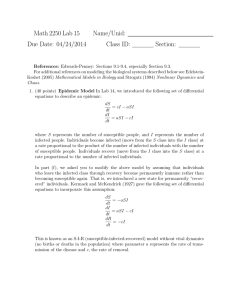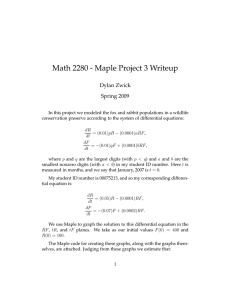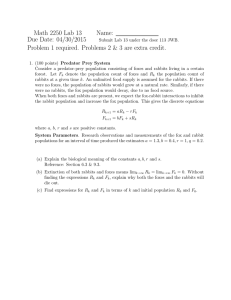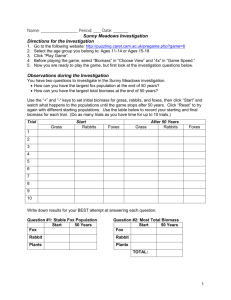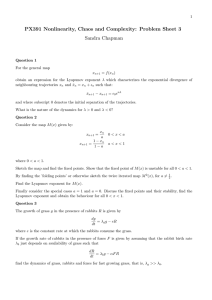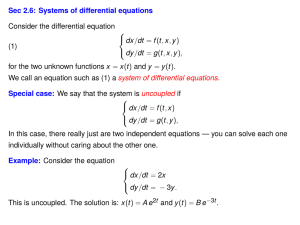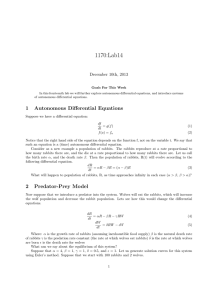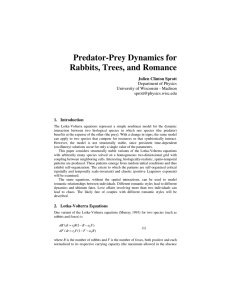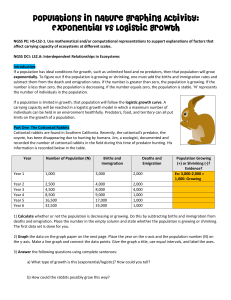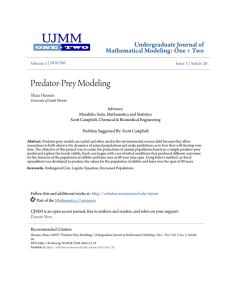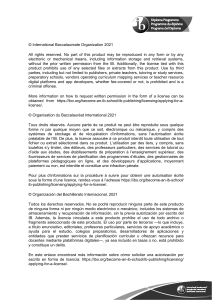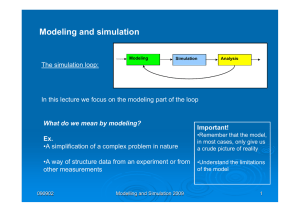Math 2250 Lab 15 Name/Unid: Due Date: 04/24/2014 Class ID:
advertisement
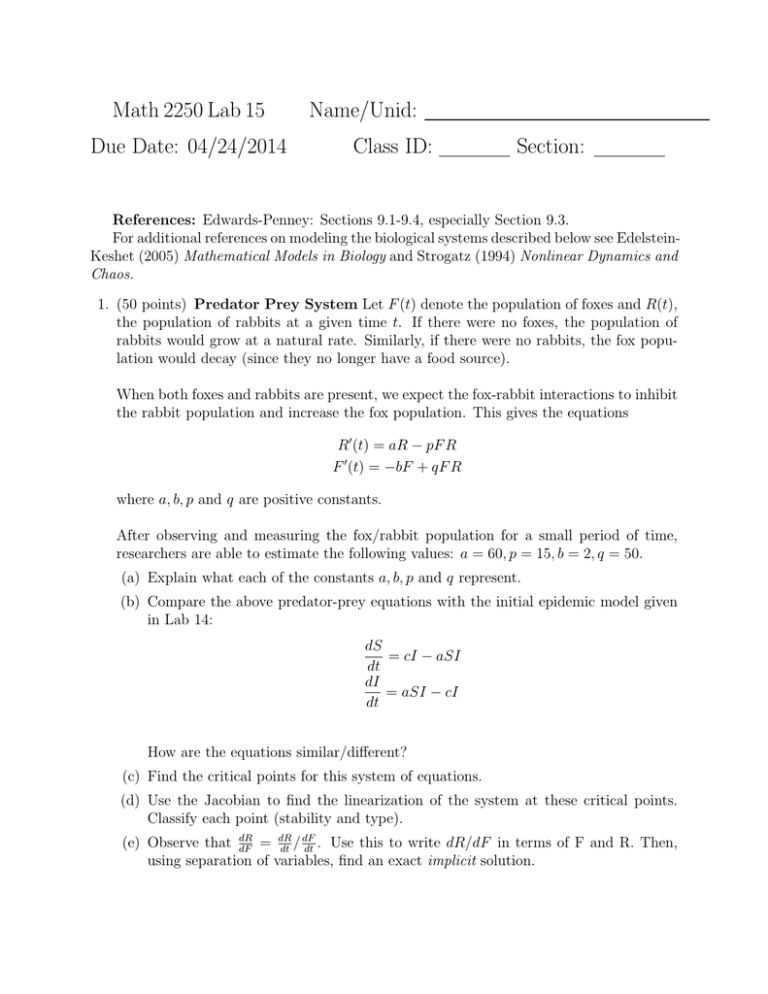
Math 2250 Lab 15 Due Date: 04/24/2014 Name/Unid: Class ID: Section: References: Edwards-Penney: Sections 9.1-9.4, especially Section 9.3. For additional references on modeling the biological systems described below see EdelsteinKeshet (2005) Mathematical Models in Biology and Strogatz (1994) Nonlinear Dynamics and Chaos. 1. (50 points) Predator Prey System Let F (t) denote the population of foxes and R(t), the population of rabbits at a given time t. If there were no foxes, the population of rabbits would grow at a natural rate. Similarly, if there were no rabbits, the fox population would decay (since they no longer have a food source). When both foxes and rabbits are present, we expect the fox-rabbit interactions to inhibit the rabbit population and increase the fox population. This gives the equations R0 (t) = aR − pF R F 0 (t) = −bF + qF R where a, b, p and q are positive constants. After observing and measuring the fox/rabbit population for a small period of time, researchers are able to estimate the following values: a = 60, p = 15, b = 2, q = 50. (a) Explain what each of the constants a, b, p and q represent. (b) Compare the above predator-prey equations with the initial epidemic model given in Lab 14: dS = cI − aSI dt dI = aSI − cI dt How are the equations similar/different? (c) Find the critical points for this system of equations. (d) Use the Jacobian to find the linearization of the system at these critical points. Classify each point (stability and type). dR (e) Observe that dF = dR / dF . Use this to write dR/dF in terms of F and R. Then, dt dt using separation of variables, find an exact implicit solution. Page 2 2. (50 points) Competing Species Recall the Rabbit-Sheep System from Lab 4 where the two species, rabbits and sheep, competed for the same resource (i.e. grass). Suppose the population dynamics of these two species are given as follows: dR = R(5 − R − 2S) dt dS = S(3 − R − S) dt where R(t) represents the population of rabbits at time t, S(t) represents the population of sheep and R(t), S(t) ≥ 0. (a) Find and draw the nullclines of this system. (b) Find the critical points of this system. (c) Draw a few vectors of the vector field, indicating the general direction in each region bounded by the nullclines. (d) Use the Jacobian to find the linearization of the system at these critical points. Classify each point you found (stability and type). Page 3 Page 4
